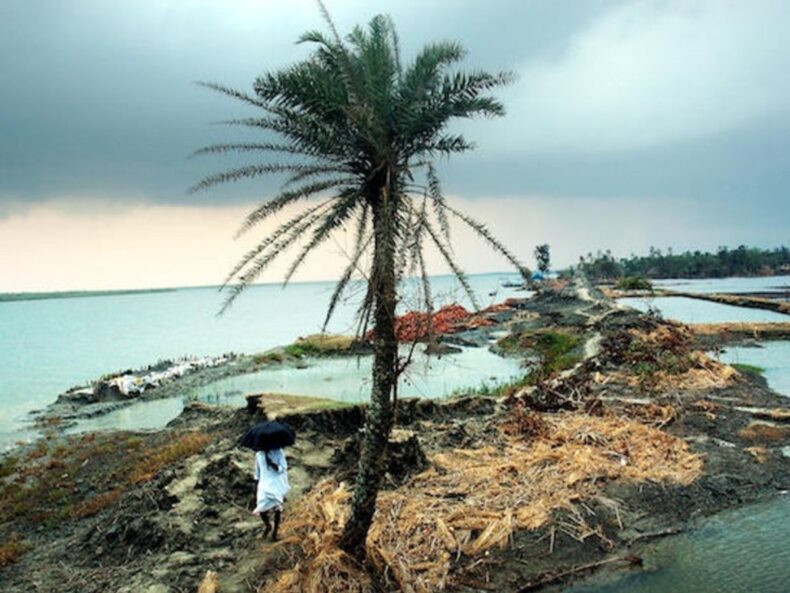Source: CNN News
In the year 2022, India faced a series of severe natural disasters that inflicted substantial economic damage on the country. Among the most notable were floods, droughts, and heatwaves, which wreaked havoc on different regions and sectors of the Indian economy. These extreme weather events not only posed immediate threats to human lives and property but also left long-lasting impacts on livelihoods and the overall economic stability of the nation.
A new report published by the esteemed World Meteorological Organisation shed light on the gravity of the situation. According to this report, the total economic loss incurred by India due to these calamities amounted to a staggering USD 4.2 billion. This considerable sum reflected the immense costs associated with disaster response, rehabilitation, and recovery efforts undertaken by the government and various aid agencies.
The most significant portion of these economic losses was attributed to the damage sustained by the agricultural sector. Floods and droughts directly affected crops, leading to substantial crop failures and a decline in agricultural productivity. Farmers suffered significant losses, as their livelihoods were devastated, and food supplies were jeopardised, further exacerbating the nation’s food security challenges.
India’s 2022 Climate Losses Reported to be Severe
Source: CNN News
In the year 2022, India faced a series of severe natural disasters that inflicted substantial economic damage on the country. Among the most notable were floods, droughts, and heatwaves, which wreaked havoc on different regions and sectors of the Indian economy. These extreme weather events not only posed immediate threats to human lives and property but also left long-lasting impacts on livelihoods and the overall economic stability of the nation.
A new report published by the esteemed World Meteorological Organisation shed light on the gravity of the situation. According to this report, the total economic loss incurred by India due to these calamities amounted to a staggering USD 4.2 billion. This considerable sum reflected the immense costs associated with disaster response, rehabilitation, and recovery efforts undertaken by the government and various aid agencies.
The most significant portion of these economic losses was attributed to the damage sustained by the agricultural sector. Floods and droughts directly affected crops, leading to substantial crop failures and a decline in agricultural productivity. Farmers suffered significant losses, as their livelihoods were devastated, and food supplies were jeopardised, further exacerbating the nation’s food security challenges.
Source: India T.V News
Beyond India, other countries in Asia also experienced distressing consequences due to similar natural disasters. Pakistan and China, among others, were also severely impacted, facing significant economic losses as a result of floods, droughts, and heat waves.
The situation served as a stark reminder of the increasing vulnerability of nations to the impacts of climate change and extreme weather events. With climate patterns becoming more erratic and unpredictable, governments and communities alike recognized the urgent need to invest in robust disaster preparedness and adaptation measures.
Efforts to strengthen infrastructure, early warning systems, and disaster response mechanisms became imperative to mitigate the devastating effects of future disasters. Additionally, there was a growing emphasis on promoting sustainable agricultural practices and resilient farming techniques to safeguard food production and farmers’ livelihoods in the face of climate-related challenges.
The events of 2022 underscored the importance of international collaboration and support in managing the consequences of natural disasters in an interconnected world. By sharing knowledge, resources, and expertise, countries in the region sought to build collective resilience and better cope with the potential impacts of future climate-related disasters.
As per the findings presented in the report titled ‘The State of Climate in Asia 2022,’ the lower course of the Ganges and Brahmaputra basins in India experienced one of the most substantial decreases in precipitation in the region. This led to the emergence of drought-like conditions in the area. These basins are crucial for sustaining the livelihoods of millions of people in India and Bangladesh, primarily through agricultural activities.
Meanwhile, some regions in India experienced extraordinarily high levels of daily precipitation during the same period, notably in central India, the Western Ghats, and the Khasi Hills. The continuous heavy rainfall, which occurred from May to September, triggered numerous landslides, river overflows, and devastating floods, causing significant casualties and damage. Tragically, these floods resulted in the loss of over 2000 lives and impacted approximately 1.3 million individuals. This flood disaster event accounted for the highest number of casualties among all the disasters that occurred in India in 2022.
Apart from floods, lightning also proved to be a significant cause of fatalities in the country. In 2022, thunderstorms and lightning claimed the lives of around 1200 people in various parts of India. For instance, on 19–20 May, Bihar witnessed more than 34 deaths due to lightning strikes.
Source: Telegraph India
The report further highlights the concerning trend of rising temperatures in Asia. The mean temperature over the continent in 2022 recorded a second-record increase of 0.72 °C above the 1991–2020 average, which itself was already 1.68 °C above the reference period for climate change from 1961 to 1990. This alarming temperature rise is in line with the global rate, estimated at 0.64 W/m2, and is affecting both the Asian portions of the northwest Pacific Ocean and the Indian Ocean.
The combined impact of these extreme weather events and the escalating temperatures emphasizes the urgent need for climate action and adaptation measures to address the increasing risks and vulnerabilities faced by India and the broader Asian region. It underscores the importance of adopting sustainable and resilient strategies to mitigate the adverse effects of climate change and protect lives and livelihoods.













